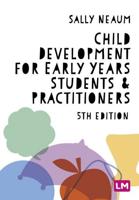Publisher's Synopsis
Excerpt from Education in Bavaria
In Bavaria, besides the University Of Munich, there are two other Universities, the one at W'urzburg and the other at Erlangen. These three Universities are supported by ancient endowments, the incomes from which are supple mented by subsidies from the State. In the year 1883 - 84 the State aid amounted to the number Of students in attendance being or about 1 in 678 Of the entire population.
In Munich, side by side with the University, exists the well known Polytechnic School, for instruction in science in its application to industry. This institution is co-ordi nate with the University, and its teaching overlaps it in many respects. Without having seen one Of these institu tions, it is almost impossible to realize their vast extent, the beauty Of their construction, the completeness Of their arrangements, and the luxury with which they are fitted. The provision Of Polytechnic Schools in Germany is, however, greatly in excess of the requirements Of the students. This arises from the fact that, When these institutions were first established, Germany was divided into several States, each Of which tried to excel the other in the magnificence Of its schools, and to attract to itself the largest number Of students. In Germany these schools are known by the name Of Technical High Schools, the word High School being synonymous with University The annual cost Of the maintenance of these establish ments is abouta quarter Of a million Of money, and the erection and equipment of them has cost certainly not less than three millions sterling.
About the Publisher
Forgotten Books publishes hundreds of thousands of rare and classic books. Find more at www.forgottenbooks.com
This book is a reproduction of an important historical work. Forgotten Books uses state-of-the-art technology to digitally reconstruct the work, preserving the original format whilst repairing imperfections present in the aged copy. In rare cases, an imperfection in the original, such as a blemish or missing page, may be replicated in our edition. We do, however, repair the vast majority of imperfections successfully; any imperfections that remain are intentionally left to preserve the state of such historical works.










